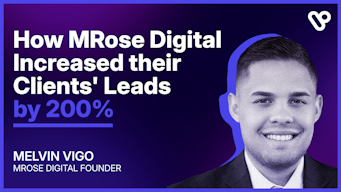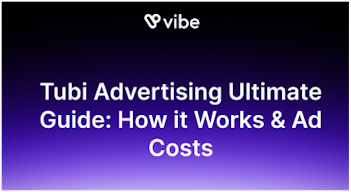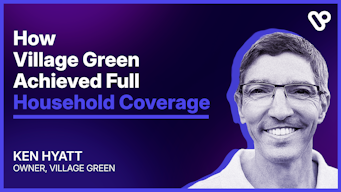Upper Funnel vs Lower Funnel Marketing: 5 Things You Need To Know
Marketing works best when you understand your customer’s journey—from discovering your brand to becoming a loyal customer.
This journey, often shown as a funnel, needs different strategies at each stage to drive results.
In this article, I’ll break down upper funnel and lower funnel marketing, share five tips to make your strategy stronger, and show you how platforms like Vibe can boost your TV marketing efforts at every stage.
Let’s dive in!
What Is Funnel Marketing?
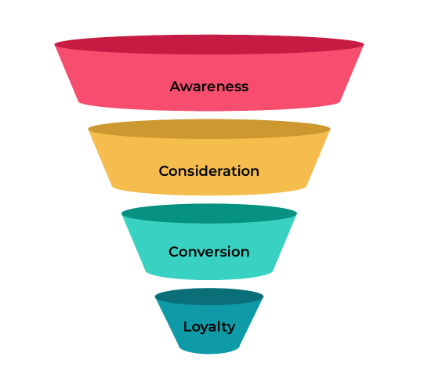
Funnel marketing represents the customer journey from the first point of contact with your brand to making a purchase and beyond.
It narrows at each stage, reflecting the decreasing number of prospects as they progress through the buying process.
Key Stages of Funnel Marketing
- Awareness Stage (Upper Funnel): At the top of the funnel, the goal is to attract a broad audience and make them aware of your brand.
- Consideration Stage (Middle Funnel): At this stage, the prospects begin to evaluate your offerings and compare them with competitors.
- Conversion Stage (Lower Funnel): The focus here is on driving actions, such as making a purchase or signing up for a service.
- Retention and Advocacy (Beyond the Funnel): Building customer loyalty and encouraging them to recommend your brand to others.
Understanding and addressing these stages effectively is key to creating a seamless customer experience.
The Role of Consumer Behavior in the Marketing Funnel
To get it right, start by building awareness in the upper funnel and creating urgency in the lower funnel.
Think about what your customers need at each stage and adjust your approach to match. It makes all the difference!
- Understanding Purchasing Intent
Using frameworks like AIDA (Awareness, Interest, Desire, Action) helps refine bottom-funnel strategies, especially for B2B decisions that need thorough research.
- Impact of Customer Journeys on Marketing Strategies
You must visualize customer experiences with journey maps that highlight touchpoints and pain points. This allows you to address barriers, tailor strategies, and foster loyalty by creating emotional connections across channels.
Comparison: Upper Funnel vs Lower Funnel Marketing
| Aspect | Upper Funnel Marketing | Lower Funnel Marketing |
|---|---|---|
| Objective | Building brand awareness and attracting a broad audience. | Driving conversions, closing sales, and nurturing leads. |
| Target Audience | Wider, less-defined audience. | Narrow, well-defined audience with purchase intent. |
| Metrics | Impressions, reach, clicks, brand recall, engagement rate. | Conversion rate, ROI, CPL (cost per lead), and sales. |
| Channels | Social media, display ads, video content, influencer marketing, and PR campaigns. | Email marketing, retargeting ads, sales calls, SEO for purchase intent keywords. |
| Content Style | Informative, engaging, storytelling-focused. | Persuasive, action-oriented, deal-specific. |
| Timeframe | Longer-term strategy with slower, cumulative results. | Short-term, immediate results with measurable impact. |
| Budget Allocation | Focus on visibility and reach; typically broader spend. | Focus on efficiency and ROI; typically more specific spending. |
| Examples | Video campaigns, social media contests, and blog posts. | Email campaigns, retargeting ads, and case studies. |
Now, let’s delve into a comprehensive understanding of the upper and lower marketing funnels.
Upper Funnel Marketing
Upper funnel marketing is all about building brand awareness and reaching potential customers who are just beginning their buyer’s journey.
You should focus on attracting a broad audience and sparking interest.
Common strategies include:
- Content marketing: You need to create engaging blogs, videos, and infographics that educate and inspire your audience.
- Social media campaigns: This involves crafting influential and engaging posts that boost your visibility across platforms.
- Search engine optimization (SEO): Ensure your website ranks for relevant keywords to attract organic traffic and improve your online presence.
- TV or digital advertising: It’s essential to run ads on platforms where your audience spends their time for maximum reach and impact.
This stage is crucial for establishing brand recognition and ensuring your business is top of mind for potential prospects.
While the upper funnel casts a wide net, the lower funnel focuses on nurturing leads into paying customers.
Lower Funnel Marketing
Lower funnel marketing focuses on conversion by targeting prospects who are already considering your product or service.
The emphasis is on addressing specific needs or objections and guiding the customer toward making a purchase.
Key strategies include:
- Personalized offers: You can provide discounts, free trials, or exclusive deals tailored to individual preferences to improve customer satisfaction.
- Retargeting ads: This strategy focuses on re-engaging visitors who have interacted with your brand but haven’t yet converted into customers.
- Case studies: It’s important to demonstrate success stories to build trust and credibility with potential clients.
- Product demos or free trials: Offering hands-on experiences allows you to effectively showcase your product and close the deal.
Both stages are interconnected and play a critical role in creating a full-funnel marketing strategy.
A well-balanced approach ensures that you’re driving new traffic and effectively converting leads into long-term customers.
5 Things You Need to Know About Upper and Lower Funnel Marketing
1. Different Goals at Each Stage
- The upper funnel focuses on building awareness and capturing interest.
- The lower funnel is all about driving action, like purchases or sign-ups.
- For instance, running a TV ad to showcase your brand story that captures attention in the upper funnel, while launching a retargeting campaign that offers a discount targets those ready to purchase the lower funnel.
2. Targeted Messaging Matters
Messaging and strategies must resonate with the intent of your audience at different stages.
- In the upper funnel, use broad, engaging content to attract attention.
- For the lower funnel, focus on personalized offers and clear calls to action.
- An example of this distinction could be a blog post introducing industry trends for the upper funnel, contrasted with an email that highlights a product’s unique features and offers a trial for the lower funnel.
3. Varying Success Metrics Across Funnel Stages
Success metrics differ significantly between the upper and lower funnel stages.
- Upper-funnel metrics typically include impressions, brand recall, and video views.
- Lower-funnel metrics focus on conversion rates, sales figures, and customer acquisition costs (CAC).
- For example, tracking video views during an awareness campaign provides insights into reach, while measuring purchases in a conversion-focused campaign reveals actual sales performance.
4. Audience Intent Changes
- Upper-funnel audiences may not know they need your product yet.
- Lower funnel audiences are already considering their options and are closer to making a decision.
5. Full-Funnel Marketing
- A strong upper funnel fills your lower funnel with potential leads.
- Aligning both stages creates a seamless customer journey that boosts results.
- An effective example would be pairing a connected TV (CTV) awareness campaign with personalized retargeting ads.
- This combination engages prospects at every stage of their journey, enhancing overall marketing effectiveness.
And BONUS:
6. Consistent Branding Throughout the Funnel
Consistency in branding is crucial for building trust and recognition across all touchpoints.
From your logo to your tone of voice, ensuring cohesive branding throughout campaigns reinforces your message.
For instance, using a consistent tagline in both social media ads and retargeting emails strengthens brand recall and fosters familiarity with your audience.
This consistent branding across channels lays the foundation for a more connected and effective approach.
That’s where a full-funnel strategy comes in—linking every stage of the customer journey, from building awareness to driving conversions.
Let’s explore why this approach is essential for sustainable growth.
What are the Benefits of Full Funnel Marketing?
- It helps you understand your customers by tracking interactions, revealing preferences, and addressing pain points with tailored messaging.
- It attracts new leads through SEO, content marketing, and social media, boosting brand awareness and engagement early in the journey.
- It measures success effectively with analytics, allowing you to track performance and identify areas for improvement.
- It optimizes strategies by highlighting bottlenecks and guiding adjustments for better results.
- It fosters loyalty with personalized content and offers, ensuring customers stay engaged and return for repeat business.
How to Optimize the Full Marketing Funnel?
Optimizing the full marketing funnel requires a comprehensive, collaborative approach.
Here are a few points that will help you optimize better:
| Funnel Stage | Focus | How to Optimize | Success Metrics |
|---|---|---|---|
| Awareness Stage (Upper) | Build brand visibility and reach a wide audience. | - Use TV, social media, or display ads. - Create storytelling ads or educational blogs. | Impressions, video views, brand recall. |
| Consideration Stage (Middle) | Engage audiences by evaluating your offerings and comparing competitors. | - Leverage retargeting with tailored messaging. - Share case studies, testimonials, or webinars to build trust. | Website visits, downloads, clicks. |
| Conversion Stage (Lower) | Drive actions, like purchases or sign-ups. | - Offer clear CTAs and personalized offers. - Simplify checkout flows and landing pages. | Conversion rates, CAC, ROI. |
| Retention & Advocacy (Post-Funnel) | Strengthen loyalty and turn customers into advocates. | - Use email marketing and loyalty programs. - Encourage reviews and referrals with rewards. | Repeat purchase rates, NPS, and customer lifetime value. |
- Collaboration between your marketing and sales teams is essential for ensuring consistent messaging and a cohesive customer experience.
- Integrating upper and lower funnel strategies effectively guides your prospects from initial awareness to final decision-making with unified content.
- Improved campaign performance results from shared tools, regular communication, and aligned KPIs across your teams.
- Targeted engagement delivers relevant offers and messaging tailored to the specific stage of the funnel where your leads are located.
Embracing this holistic approach maximizes your conversions and fosters lasting relationships with customers at every stage of their journey.
Optimizing the funnel is just the first step. The real challenge lies in managing and integrating these efforts seamlessly across every stage.
This is where a tool like Vibe becomes helpful. It helps you streamline your strategy and maximize results.
Let’s explore why Vibe is the perfect fit for full-funnel marketing.
Full-Funnel Marketing With Vibe
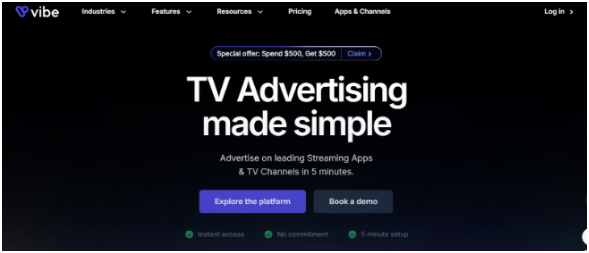
Vibe is a streaming and connected TV advertising platform that enables marketers to launch campaigns in just 5 minutes, reaching audiences on leading streaming apps and TV channels.
Let’s explore its features and discover how it can improve both upper and lower funnel marketing strategies.
How to use Vibe for Upper Funnel Marketing :
- Targeting: It allows you to advertise to specific demographics with precision, ensuring your message resonates with the right audience.
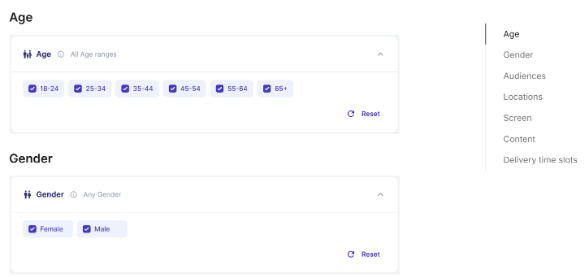
- Creative Testing: This feature enables you to utilize A/B testing to discover the most impactful visuals and messaging, enhancing overall campaign effectiveness.
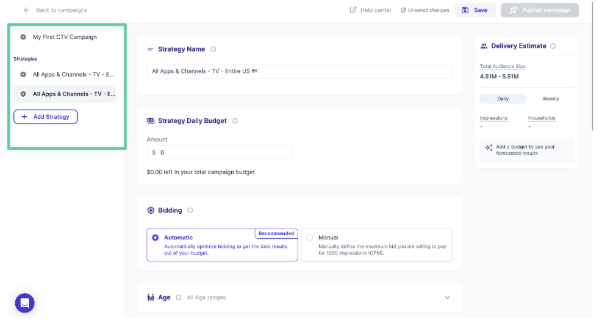
- Reach: You can deliver campaigns to 120 million households nationwide or focus on local communities for targeted engagement.
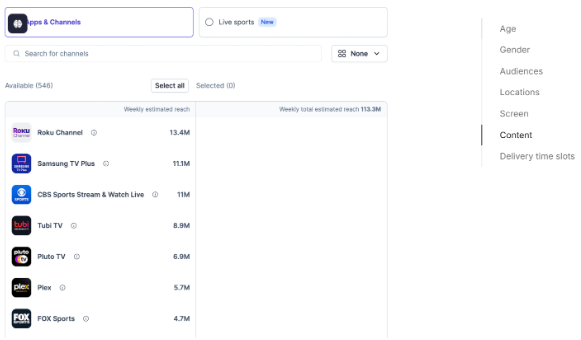
- Diverse Channels: It provides the option to choose from over 500 apps and channels, including popular sports, movies, and local news, maximizing your visibility.
How to use Vibe for Lower Funnel Marketing:
- Customizable CTAs: You can drive action with compelling calls-to-action that encourage immediate responses from your audience.
- Real-Time Performance Tracking: This feature allows you to measure conversions, impressions, and ROI with real-time reporting, optimizing your campaigns and also performing re-targeting effectively.
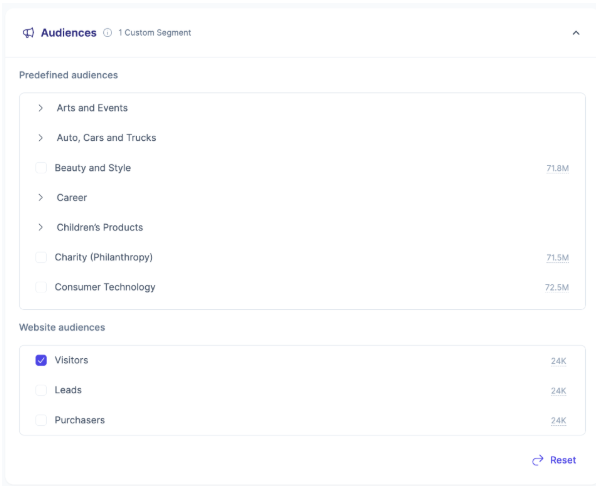
- Cost-Effective Advertising: With starting costs as low as $50 and a mere $0.02 cost per view, Vibe makes TV advertising affordable for businesses of all sizes.
.
Key Takeaways on Upper Funnel vs Lower Funnel Marketing
Upper and lower-funnel marketing aren’t just separate strategies—they’re essential parts of a cohesive marketing approach.
The upper funnel builds brand awareness and sparks interest, while the lower funnel drives conversions and loyalty.
Together, they create a full-funnel strategy that guides prospects seamlessly from discovery to decision.
Platforms like Vibe make it easy to optimize your TV advertising for each stage of the funnel.
Whether you're targeting new audiences or converting those ready to make a purchase, Vibe provides the tools you need to enhance your marketing effectiveness.
Are you ready to elevate your funnel strategy and achieve lasting success?
Explore the Vibe platform today and take advantage of their $500 ad credit offer to kickstart your TV campaigns.
Transform your marketing approach and watch your business thrive!

